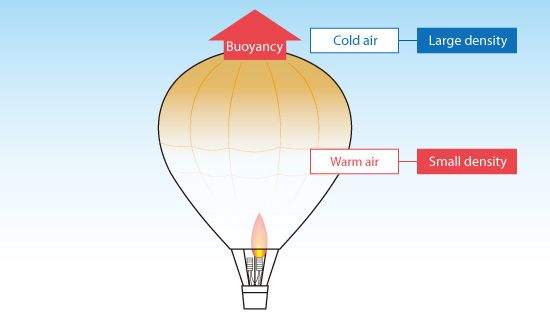
Convection is an integral physical process that influences various phenomena in our environment, such as weather patterns, ocean currents, and even the comfort of our own homes. The movement of air during convection can be both fascinating and multifaceted. This article aims to elucidate the mechanisms behind air movement during convection while breaking down complex concepts into easily digestible segments.
At its core, convection is the transfer of heat through fluids (which include liquids and gases) via the movement of the medium itself. The underlying principle governing convection is buoyancy, which is influenced by the temperature and density of the air. To understand the dynamics of air movement during convection, it is essential to explore several foundational concepts.
1. Temperature Differentials and Density Changes
The genesis of convection starts with temperature differentials within a fluid medium. When air is heated, it expands and becomes less dense than the cooler air surrounding it. This shift in density leads to an upward buoyant force acting on the warm air. Consequently, the heated air rises—a process that is often visualized as an upward current. In contrast, cooler air, which is denser, sinks. This cycle creates a continuous movement pattern known as a convection current.
2. The Role of Heat Sources
In practical terms, heat sources play a crucial role in initiating convection. Common examples include the Earth’s surface being warmed by the sun, a heating element in a room, or the warmth generated by the Earth’s core. Each of these heat sources instigates a thermal gradient that catalyzes airflow. As warm air rises and is replaced by cooler air, a consistent circulating motion develops, establishing a convection loop.
3. Natural vs. Forced Convection
Convection can be categorized into two primary types: natural convection and forced convection. Natural convection occurs spontaneously due to buoyancy-driven phenomena, as previously described. It is prominently observed in atmospheric dynamics, where warm air ascends, leading to the formation of clouds and other meteorological events.
Conversely, forced convection is induced by external means, such as fans or pumps. This process is frequently utilized in heating systems, where air is actively circulated to enhance temperature uniformity within a space. In this case, mechanical means augment the natural convection process, leading to rapid and efficient heat transfer.
4. Characteristics of Convection Currents
Understanding convection currents requires recognizing their defining characteristics. These currents tend to form in loops: warm air rising, cooling as it ascends, and eventually sinking back down as it loses its heat. This cyclical nature persists until thermal equilibrium is achieved. The intensity and pattern of these currents can vary significantly based on factors such as the heating method, environmental constraints, and medium properties.
In a controlled environment, such as a room heated by a radiator, air will warm up near the source and rise. The cool air, denser and heavier, then sinks to be reheated, perpetuating the cycle. These currents are typically more pronounced in larger spaces, where the distance between hot and cold zones is more substantial.
5. Effects of Convection on the Environment
The implications of convection extend beyond mere air movement; they have widespread environmental consequences. For instance, in meteorology, convection plays a pivotal role in the formation of weather patterns. Warm, rising air can lead to cloud formation, precipitation, and even storm development. Similarly, in oceanography, convection contributes to ocean currents that regulate global climate by transferring heat between the equator and polar regions.
On a smaller scale, the principles of convection are essential in cooking. When boiling water, for example, the heat from the burner warms the bottom layer, causing it to rise while cooler water sinks, creating a rolling boil that efficiently distributes heat throughout the pot.
6. Understanding Applications of Convection
Convection has numerous practical applications in various fields. In engineering, it informs the design of heating and cooling systems to maximize thermal efficiency. In climate science, models of convection are integral to predicting weather and understanding climate change’s implications. In culinary arts, chefs leverage convection by utilizing convection ovens that circulate hot air for even cooking.
Moreover, in environmental studies, understanding convection helps predict urban heat islands, where cities experience higher temperatures compared to surrounding rural areas due to extensive human activity and infrastructure that influences air movement.
7. Conclusion: The Unified Nature of Air Movement
In summary, the movement of air during convection is a dynamic and transformative process driven by temperature differentials and buoyancy. From natural events like thunderstorms to the controlled environment of our homes, convection is foundational to understanding the world around us. By grasping the mechanics of air movement, one can appreciate the symbiosis between natural forces and practical applications. As we develop a deeper understanding of convection, we enhance our ability to navigate and adapt to both natural and human-made systems.
